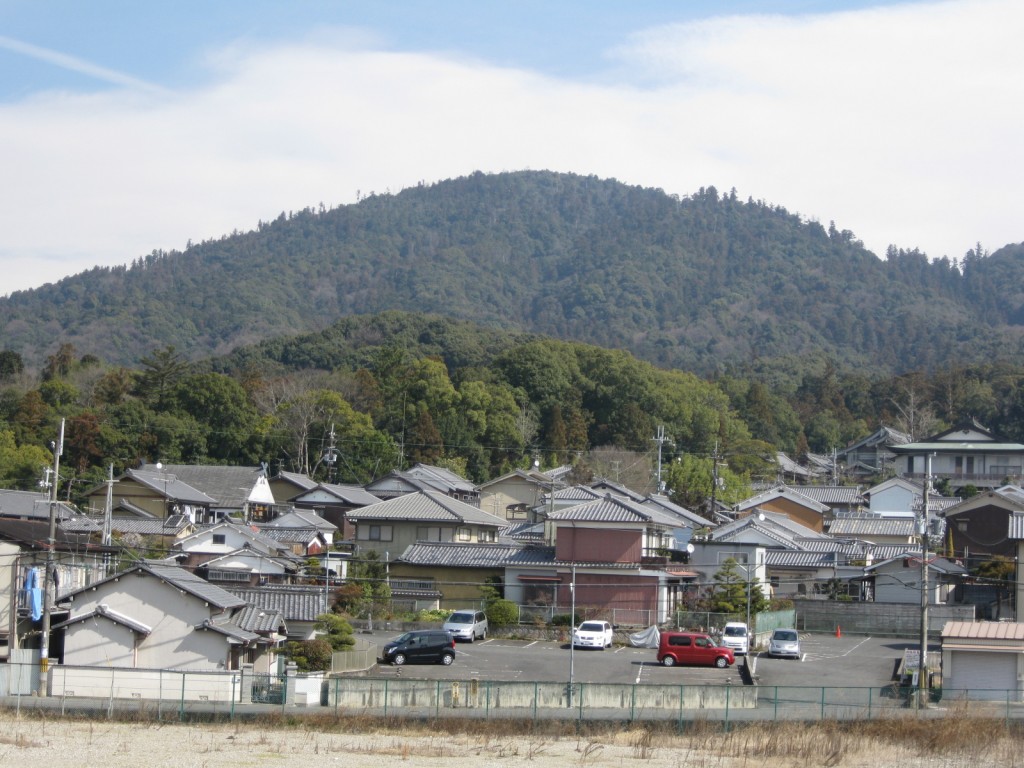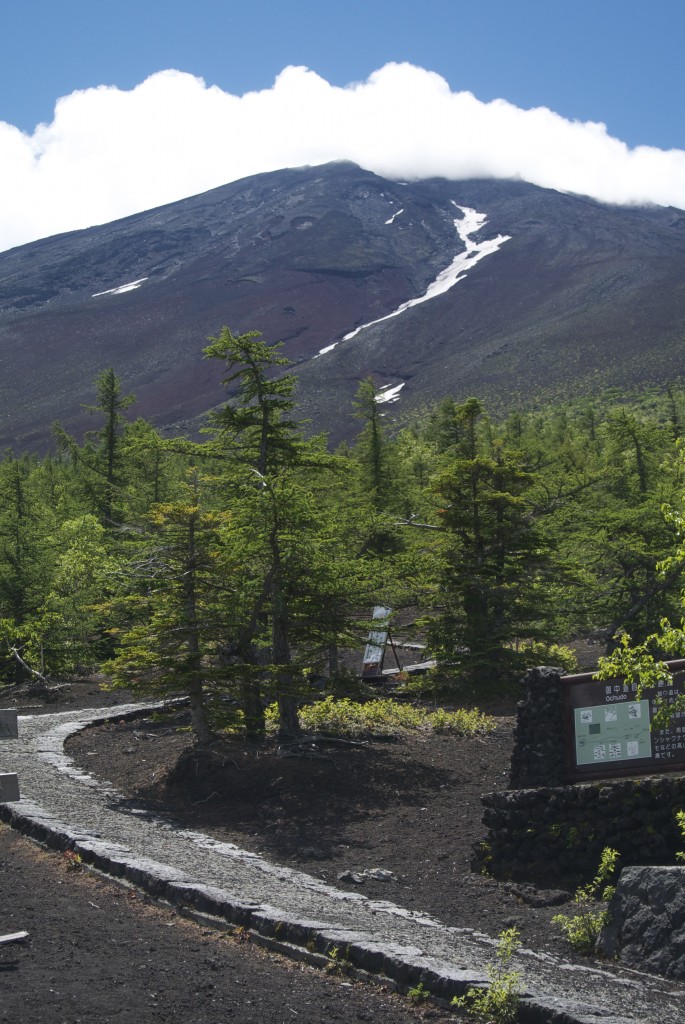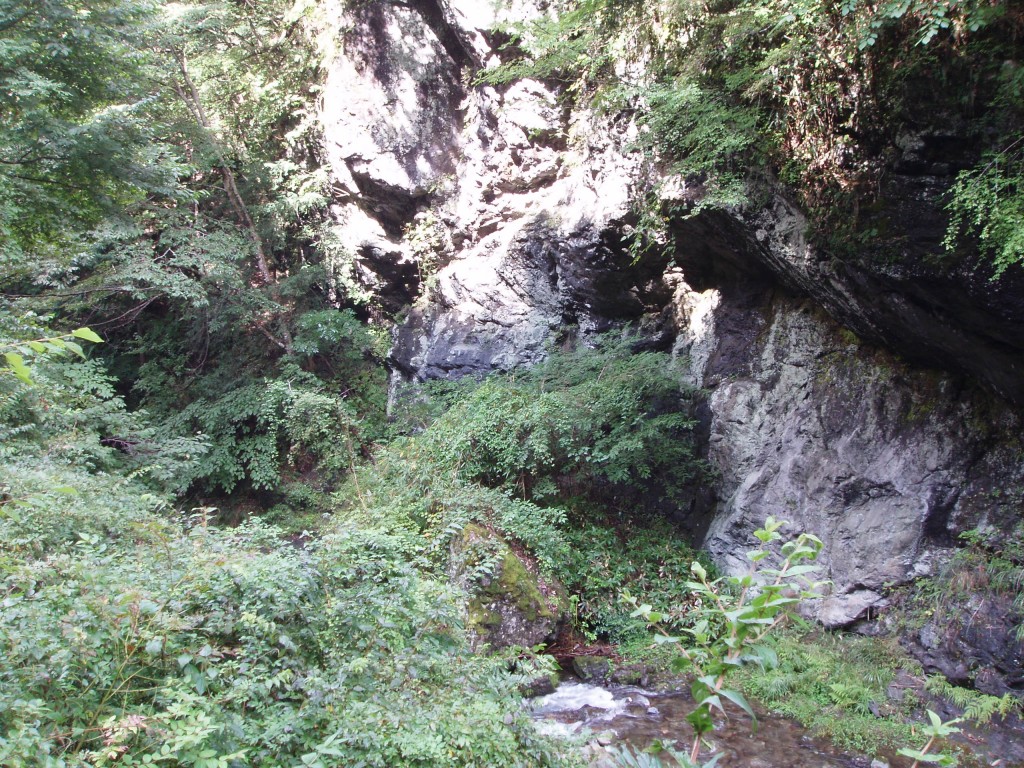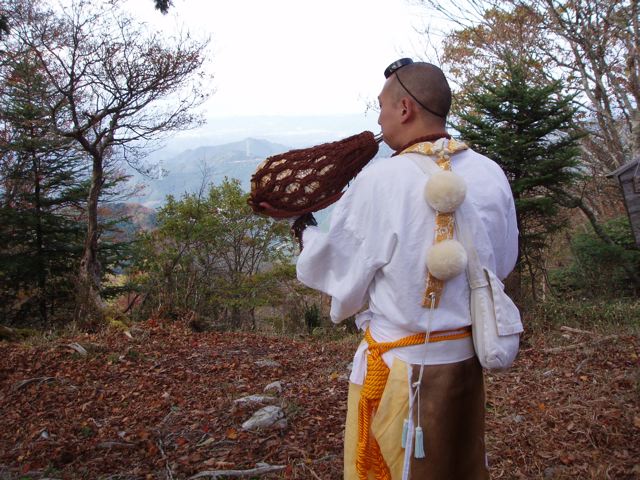
Mt Miwa casts a protective eye over the settlement below it. The mountain is a 'goshintai' (sacred body) for Omiwa Jinja and worshipped directly.
On the afternoon of 25 April, the Lower House of Parliament in Japan passed an amendment to the nation’s Holiday Act to include a new public holiday Mountain Day (Yama no Hi). It was yesterday approved too in the Upper House, making it Japan’s 16th civic holiday. That’s far more than most countries, though Japanese tend not to take annual holidays, or just a week or less. (June is now the only month without a bank holiday.)
It’s rather wonderful to have a whole holiday dedicated to mountains, and testimony of the significant role they play in the cultural identity of the nation. According to the amendment, Mountain Day is intended “to give opportunities to get close to mountains and to appreciate the benefits of mountains.” They have of course played a formative part in Shinto, and mountain worship in various forms continues to play a significant role.

Mt Fuji, now a World Heritage Site, lies at the heart of the national consciousness
In shamanic cultures, the spirits of the dead became identified with local mountains. Fear of death led ancient people to desire that spirits live on after death. Since bodies were left on mountainsides or behind rocks, the spirits would naturally have been thought to become part of them. Think of burial mounds, for instance. This prompted the notion that the ancestral spirits were in fact spirits of place. Or animist. If rocks and the land could have spirit, then so could trees, waterfalls and mountains.
Clans living beneath mountains looked on the spirit in the mountain as a guardian deity. This spirit was personified and often identified with the leader of the clan. In this way the clan belonged to the land; in fact, through death the clan actually became part of the land. It explains why the clan shrine, or ujigami, remains a home base for many Japanese even now, when modernity has led to mobility.
Mountain spirits literally look after those who live in the valleys below them. It explains why there are so many shrines in Japan built at the foot of the local hill. Mountains are our guardians. Mountains are our friends.
*********************************
The following piece is taken from Kansai Scene:
Knocking on hiking heaven’s door Text: Tom Fay • May 1, 2014
In days long past, mountains were revered as sacred and mysterious places, and were only climbed by Shinto and Buddhist priests on their spiritual pilgrimages. It wasn’t until the late 1800s that an Englishman called Walter Weston arrived in Japan, founded the Japanese Alpine Club and changed the perception of those high places forever. Climbing mountains became a form of recreation, and has boomed in popularity ever since.
These days, people of all ages and fitness levels can be found huffing and puffing along the myriad of trails which litter the mountainsides, and although the biggest and most challenging peaks tend to be found in the Japan Alps, you don’t have to travel far to enjoy some beautiful scenery and satisfying treks. Indeed there are countless enjoyable hikes to be had in the Kansai region, most famous of which (and best for beginners) is probably Mount Rokko, with its clearly marked and easy ascent overlooking Kobe. One of the best parts of this particular hike is finishing the day with a nice, hot soak in the hot spring town of Aroma.

Part of the sacred mountains near Omine
Omine-san (Nara)
This is a popular hike on a pilgrimage route, taking in a number of sacred sites. In fact, the peak of Sanjo-ga-take remains off-limits to women, although there are routes which bypass this. With an early start from Dorogawa Onsen, it is possible to reach two of the highest points in Kansai, Mount Misen and the nearby Mount Hakken (although it is probably best to stay the night in a hut). The trail itself is well marked, following the ridge line after a steep climb, and even if your muscles begin to feel the pain, the spiritual nourishment of hiking along a route still used by pilgrims and mountain priests will surely spur you on. If not, then the promise of a hot bath back at the foot of the mountain might do the trick.
Access: Train to Shimoichikuchi station and then a bus.

A mountain ascetic announcing to the world the deep spiritual wisdom inherent in mountains

Nice piece John.